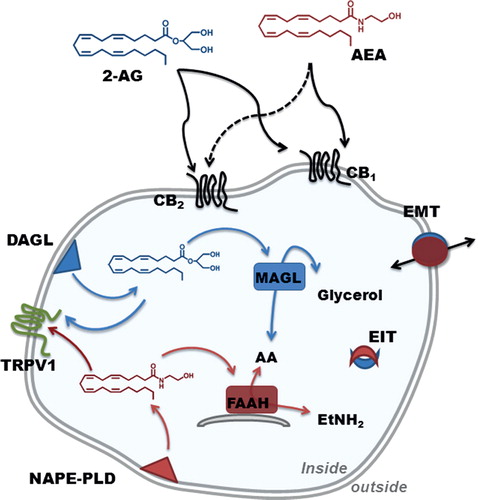Figures & data
Table 1. Δ9-Tetrahydrocannabinol, endocannabinoids and major eCB system elements in female reproductive cells.
Table 2. Involvement of eCB system elements in female fertility. See text for details.
Figure 2. FAAH is a molecular integrator of female fertility signals. Compounds that act at the immune interface as pro-fertility signals (e.g., progesterone, leptin or T helper 2 [Th2] cytokines) also enhance FAAH activity. Conversely, molecules that can impair reproduction by acting on immune cells (e.g., Th1 cytokines) or on the uterine epithelium (e.g., progesterone and estrogen) inhibit FAAH.
![Figure 2. FAAH is a molecular integrator of female fertility signals. Compounds that act at the immune interface as pro-fertility signals (e.g., progesterone, leptin or T helper 2 [Th2] cytokines) also enhance FAAH activity. Conversely, molecules that can impair reproduction by acting on immune cells (e.g., Th1 cytokines) or on the uterine epithelium (e.g., progesterone and estrogen) inhibit FAAH.](/cms/asset/2f99a489-d182-45ac-8784-c169b9604e5c/iett_a_1062878_f0002_c.jpg)

